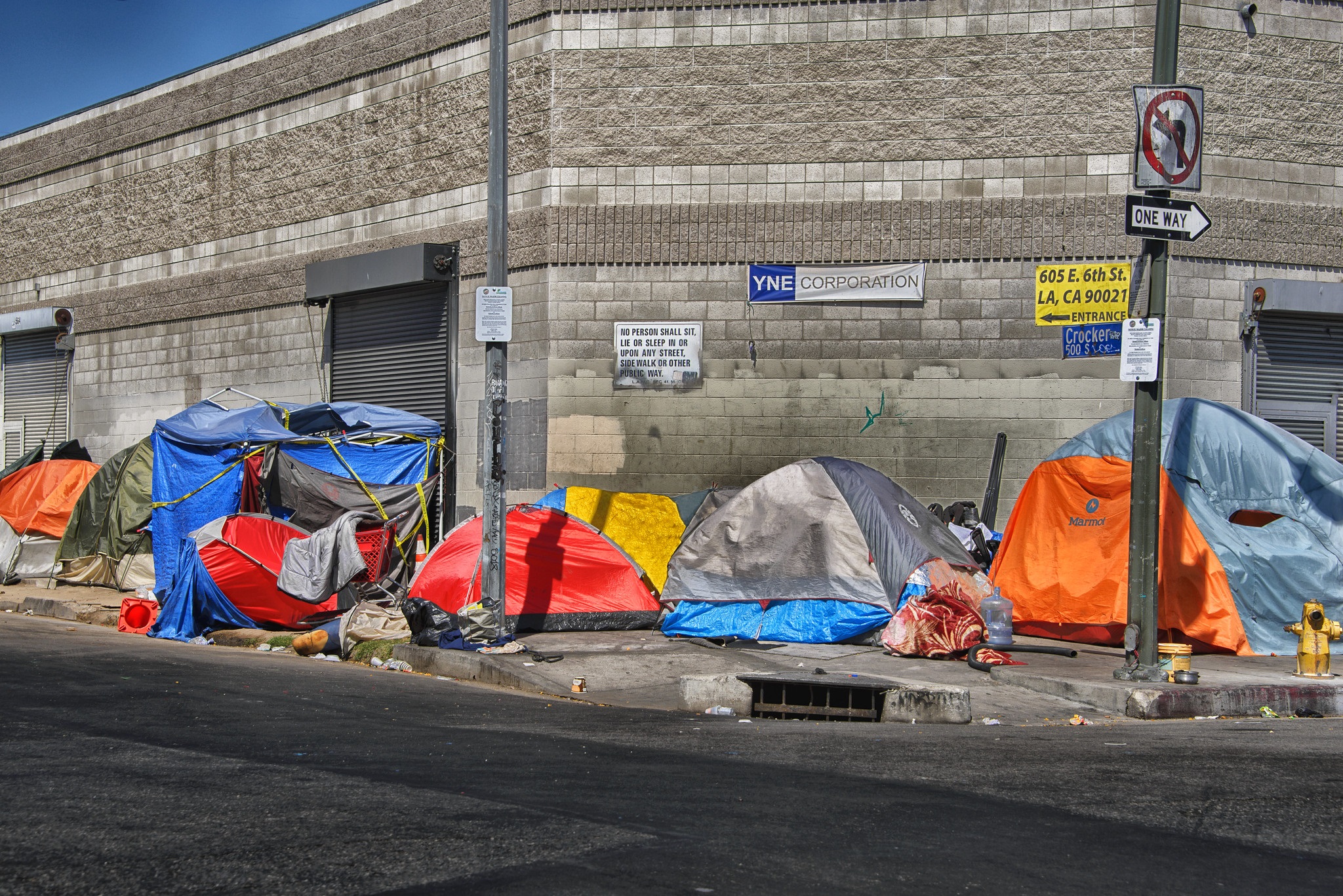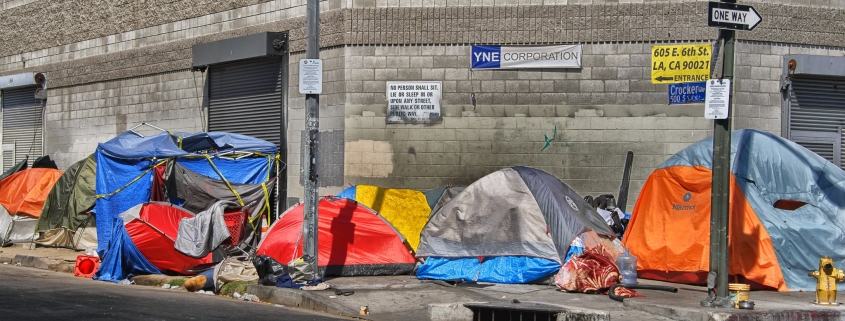‘Alarming’ Increase in U.S. Hepatitis A Cases, CDC Reports
Resurgence of the viral liver disease is linked to drug use and homelessness.

Tents line the sidewalks of Skid Row near downtown Los Angeles, an area where people experiencing homelessness gather. Photo courtesy of Flickr/Creative Commons user Russ Loar
By Brett Walton, Circle of Blue
Measles is not the only preventable disease on the rise in the United States. There was an “alarming increase” in the number of hepatitis A cases in the country in the last three years, according to a Centers for Disease Control and Prevention report.
The number of cases soared to more than 15,000 nationwide in 2016 through 2018, up from 4,410 in the previous three-year period. Eighteen states registered a decline in the number of cases, but in nine states, the number rose by more than 500 percent.
The resurgence of the viral liver disease, which had declined significantly since the mid-1990s, is attributable in large part to drug use and people experiencing homelessness, according to the CDC.
Monique Foster, a CDC epidemiologist, told Circle of Blue that unsanitary living conditions are a factor in transmitting the hepatitis A virus, but it is difficult to say how large a role a lack of toilet and hand-washing access has played nationally. One way the virus is spread is when an unvaccinated person ingests trace amounts of feces from an infected person, or from contaminated food or water.
States with the highest percentage increase mirror those in which opioid drug use or homelessness are most prevalent: Appalachia, California, and the Midwest. An ongoing outbreak in southeastern Michigan, centered on the Detroit metropolitan area, has infected 913 people and killed 28.
San Diego County experienced one of the largest hepatitis A outbreaks in recent years. Between March 2017, when the rise in illnesses was first noticed, and January 2018, when it was controlled, health officials recorded 592 hepatitis A cases in San Diego County and 20 deaths from the disease.
County health officials and city agencies commanded an arsenal of responses. They disinfected sidewalks with bleach, posted the locations and operating hours of public toilets, and set up mobile hand-washing stations. They also vaccinated more than 212,000 people, sending nurses into ravines, urban camps, and river beds to “meet people where they were,” said Wilma Wooten, the San Diego County public health officer.
Wooten told Circle of Blue that San Diego officials had to overcome initial resistance to the vaccination campaign. They couldn’t force people to get the shot, and some in the at-risk population thought the needles were a government conspiracy. Going into the field with trusted partners who worked with people experiencing homelessness helped to surmount those hurdles of suspicion, Wooten said.
Foster reiterated the important of vaccines. “Vaccination is the most powerful tool we have to stop these outbreaks now and prevent similar ones in the future,” she said. “CDC is encouraging health departments in affected areas to vaccinate people who report substance use and people experiencing homelessness.”
The introduction of the hepatitis A vaccine in 1995 returned immediate and consequential results: a 95 percent decline in the infection rate between 1996 and 2011.
Though vaccination was their core strategy, San Diego city and county officials fumbled in other areas, according to a California auditor’s assessment of the outbreak response. They could have acted sooner to improve sanitation for people experiencing homelessness, the report states.
“Despite conversations between the county and city as early as June 2017, neither began fully implementing measures related to hand-washing stations, public restroom access, and street sanitation until September 2017,” Elaine Howle, the state auditor, wrote.
In this respect, collaboration and coordination between local government jurisdictions is essential, Wooten said. The homeless population is mobile, viruses travel, and disease does not confine itself within political boundaries.
The health department in King County, Washington, home to Seattle, identified a hepatitis A case in April this year in a person experiencing homelessness. That person had spent time at locations throughout Seattle and the county.
Brett writes about agriculture, energy, infrastructure, and the politics and economics of water in the United States. He also writes the Federal Water Tap, Circle of Blue’s weekly digest of U.S. government water news. He is the winner of two Society of Environmental Journalists reporting awards, one of the top honors in American environmental journalism: first place for explanatory reporting for a series on septic system pollution in the United States(2016) and third place for beat reporting in a small market (2014). He received the Sierra Club’s Distinguished Service Award in 2018. Brett lives in Seattle, where he hikes the mountains and bakes pies. Contact Brett Walton











Leave a Reply
Want to join the discussion?Feel free to contribute!